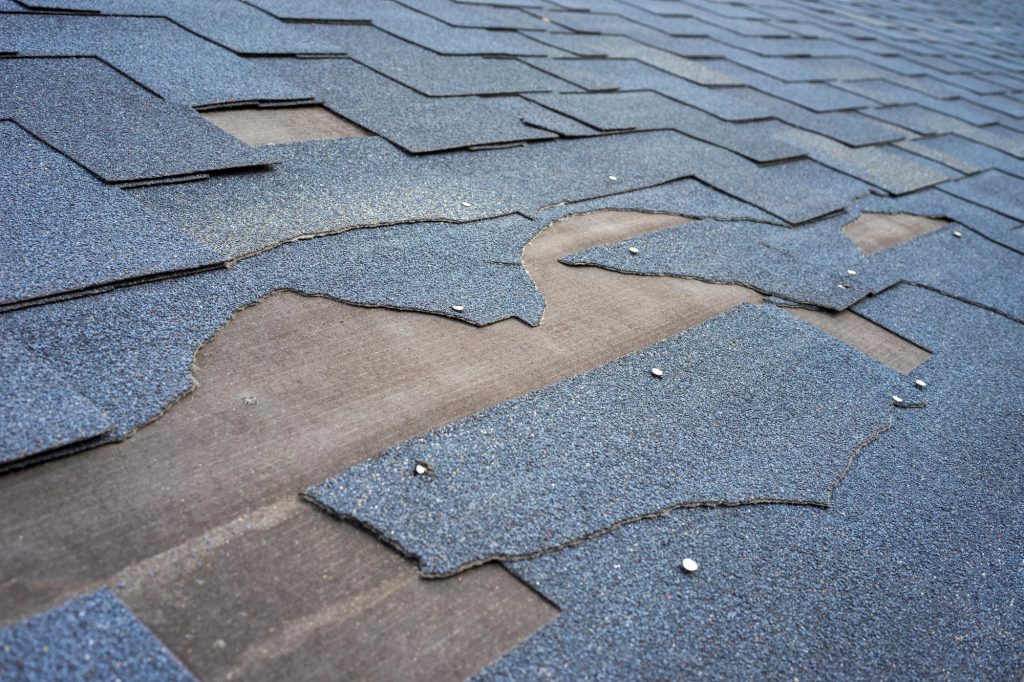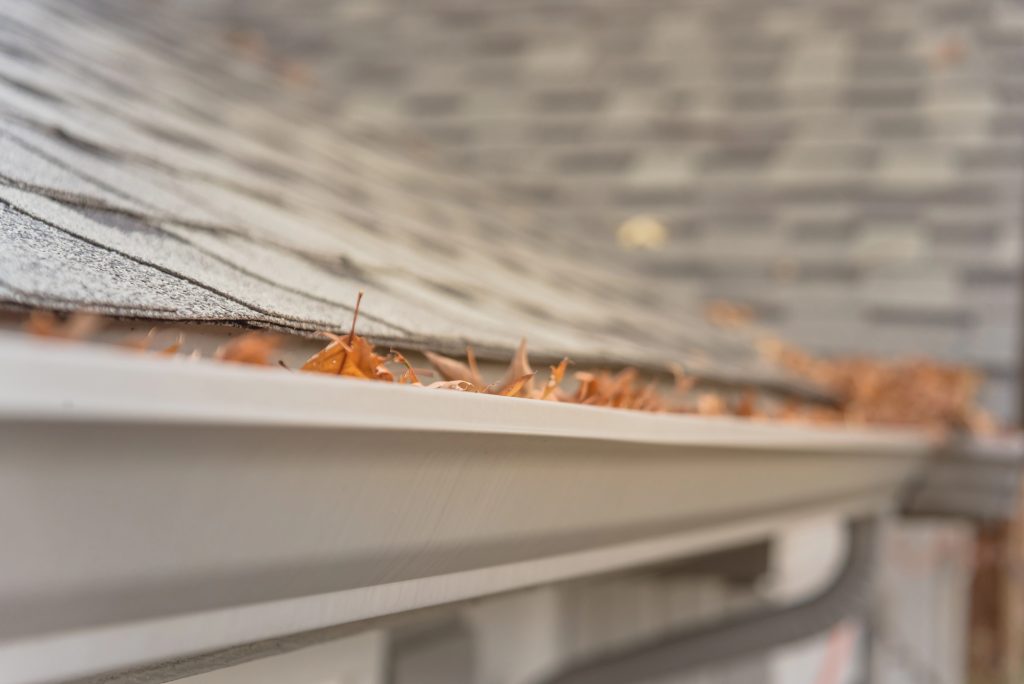Kansas City’s weather is known for its dramatic swings, with severe storms rolling through the area, bringing high winds, heavy rain, and sometimes hail. While your home is built to be a sanctuary from the elements, your roof takes the brunt of the impact. After a storm passes, it’s easy to assume everything is fine if there are no immediate, obvious problems. However, underlying storm damage can lead to serious issues like leaks, mold, and structural decay if left unaddressed.
Knowing what to look for after a storm is the first step in protecting your home and investment. This guide will walk you through the most common signs of roof storm damage, what to do if you spot them, and why a professional inspection is your best defense against long-term problems.
Missing, Cracked, or Bruised Shingles 
Your shingles are your roof’s first line of defense. High winds can easily lift, curl, or completely tear shingles off your roof, leaving the underlying structure exposed.
What to look for:
- Missing Shingles: Scan your roof from the ground for any patches where shingles are gone. You might also find shingles scattered around your yard.
- Cracked Shingles: Wind can cause shingles to bend and eventually crack. These cracks are entry points for water.
- Bruised Shingles: Hail is a major culprit for “bruising” asphalt shingles. A hailstone impact can knock off the protective granules, creating a soft spot that feels like a bruise on a piece of fruit. These spots weaken the shingle and accelerate its deterioration.
Visible shingle damage is a clear signal that your roof’s integrity has been compromised. Even a few missing shingles can allow water to seep into your attic, leading to costly repairs.
Dents and Dings on Gutters and Vents
While you might not be able to see every part of your roof from the ground, other metal components can give you clues about potential damage.
What to look for:
- Dented Gutters and Downspouts: Check your metal gutters, downspouts, and gutter guards for dents. If hail was large and forceful enough to dent metal, it likely damaged your shingles as well.
- Damaged Vents and Flashing: Look for dents or cracks on roof vents, exhaust pipes, and the metal flashing around your chimney. These areas are critical for keeping your roof watertight, and any damage can create an immediate leak.
These signs often indicate that your entire roofing system has been impacted by hail or wind-blown debris and warrants a closer look from a professional.
Click Here to Learn More About Roof Repair and Replacement
Water Leaks and Stains in Your Attic
Some of the most serious signs of storm damage aren’t on the outside of your home, but on the inside. An attic inspection is a crucial step after a severe storm.
What to do:
- Safely access your attic and, using a flashlight, look for signs of water intrusion.
- Wet Insulation: Check for damp or matted-down insulation.
- Water Stains: Look for dark stains or streaks on the underside of the roof deck (the wood sheathing).
- Daylight: If you see any daylight coming through the roof boards, you have a clear hole that needs immediate attention.
Water damage in the attic is a sure sign that your roof has been breached. Acting quickly can prevent the problem from spreading to your ceilings, walls, and electrical systems.
Granules in Your Gutters and Downspouts 
Asphalt shingles are coated with granules that protect them from the sun’s UV rays and add to their durability. A powerful storm can knock these granules loose.
What to look for:
- Check the bottom of your downspouts and inside your gutters for an accumulation of black, sand-like particles. This is what shingle granules look like.
- A significant amount of granule loss after a storm suggests that your shingles have been weakened and are nearing the end of their effective lifespan. This is often referred to as “accelerated aging” caused by hail impacts.
While all shingles lose some granules over time, a sudden, heavy accumulation is a red flag for storm damage.
What to Do If You Suspect Storm Damage
If you notice any of the signs above, it’s important to act promptly to prevent further damage to your home.
- Document the Damage: Take photos of everything you see, from missing shingles in your yard to dents on your gutters and water stains in the attic. This documentation will be helpful for your insurance claim.
- Prioritize Safety: Avoid climbing on your roof yourself, especially if it is wet or appears structurally weak. A damaged roof can be extremely dangerous.
- Call a Professional Roofing Contractor: The most important step is to schedule a professional roof inspection. An experienced roofer has the training and equipment to safely assess the full extent of the damage, much of which may not be visible from the ground.
Your Trusted Partner for Storm Damage Repair in Kansas City
At Acord Roofing, we understand the stress that comes with storm damage. With years of experience serving the Kansas City metro area, our team specializes in identifying and repairing all types of storm-related roof issues. We are committed to providing honest assessments and high-quality repairs to restore your peace of mind.
Our comprehensive inspection process ensures that no detail is overlooked. We will provide you with a clear, detailed report of our findings and work with you to find the best solution, whether it’s a minor repair or a full roof replacement. We pride ourselves on our quality workmanship and commitment to customer satisfaction, ensuring your roof is ready to protect your home from the next Kansas City storm.
Don’t wait for a small problem to become a major disaster. If you suspect your roof has been damaged, contact Acord Roofing today for a professional inspection.
